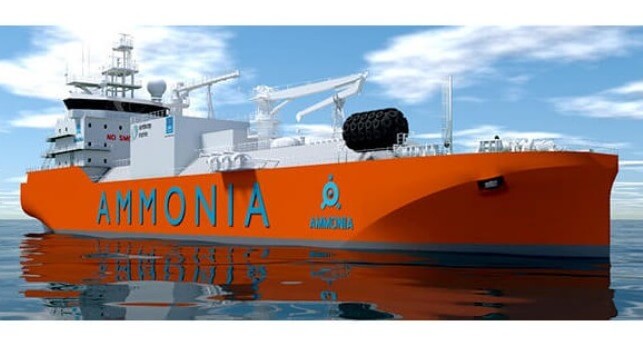Design Approval for a Future Ammonia Bunker Vessel in Singapore

Design approval was granted for what could become the first ammonia bunkering vessel designed to support the industry’s transition to the new alternative fuel. The vessel, which was developed by Mitsui O.S.K. Lines, ITOCHU Corporation, and Sembcorp Marine Integrated Yard are part of the industry’s efforts to create the infrastructure required for the transition to future fuels.
The vessel’s design took into consideration ammonia’s toxicity, as well as design input on the cargo containment system and bunkering system from Wartsila Gas Solutions and Trelleborg Westbury/KLAW LNG. The goal is to build on the experience developed in the handling of LNG to create the systems to handle the new fuel. After conducting a thorough risk assessment that included exploring the scale and potential risks to ensure sufficient system-wide safety, the partners applied for and received the Approval in Principle (AIP) from the American Bureau of Shipping for the ammonia bunkering vessel.
The partnership highlights that marine engine manufacturers around the world are working to develop an ammonia-fueled engine. While delivery of the first ammonia-fueled vessel is not expected till the late 2020s at the earliest, the group notes the importance of developing the infrastructure at the same time. The ammonia bunkering vessel will supply these next-generation-fueled vessels.
The designing of the bunker vessel is part of a larger project that began in the spring of 2021 to study the development of the ammonia fuel supply chain in Singapore. Already the world’s largest bunkering port, Singapore is aiming to become the first ship-to-ship ammonia bunkering base to help decarbonize global shipping.
The project’s goal is to promote the development of an off-shore facility such as floating storage unit and or an ammonia bunkering ship, as well as the development of safety guidelines using the participants’ experience and expertise in building and owning LNG fuel supply vessels. Among the companies in the project are Mitsui O.S.K. Lines, ITOCHU Corporation, ITOCHU ENEX Co., Vopak Terminals Singapore, Pavilion Energy Singapore, and Total Marine Fuels.
MOL is working to develop ammonia-fueled vessels and create an ammonia transport business. Three months ago, the company announced plans to develop large-size ammonia carriers as part of its efforts to introduce net-zero emission ocean-going vessels during the current decade and achieve net-zero greenhouse gas emissions by 2050. The Japanese government is also supporting the transition to ammonia as a fuel leading to estimates that annual ammonia demand in Japan could reach three million tons by 2030 and 30 million tons by 2050.
Sembcorp Marine is also currently building a 12,000 m³ LNG bunkering vessel for Mitsui O.S.K. Once completed, this vessel will be the largest LNG bunkering vessel built in Singapore. The new ship will be used to augment the development of Singapore’s infrastructure to support LNG bunkering while efforts proceed with future alternative fuels. Sembcorp Marine is also partnering with Shell and Penguin International to jointly develop hydrogen as a marine fuel.
